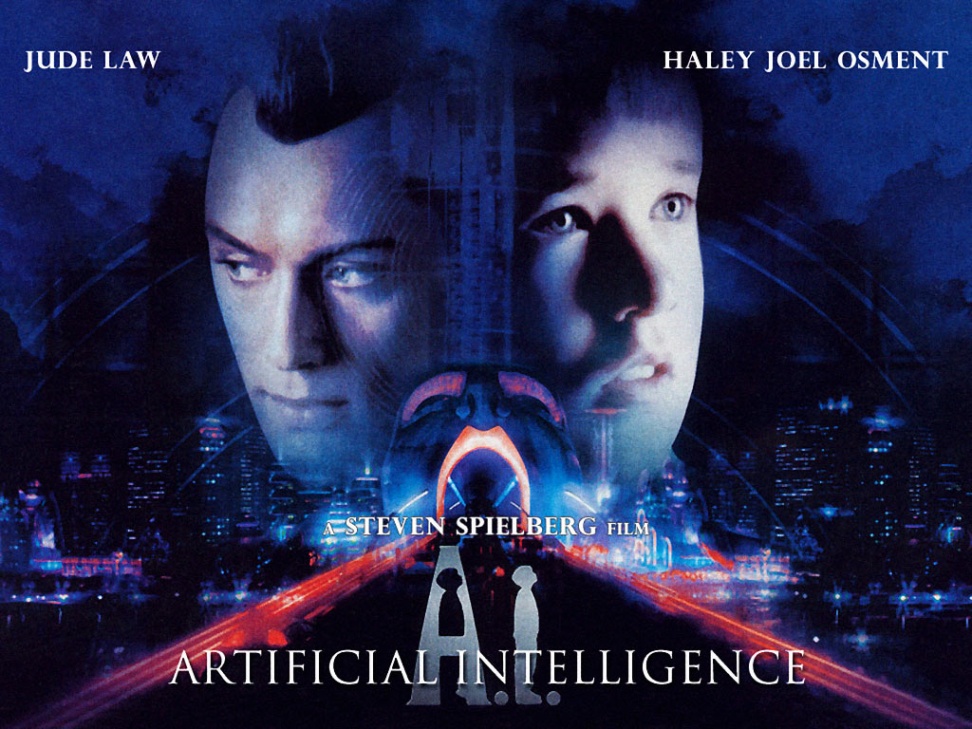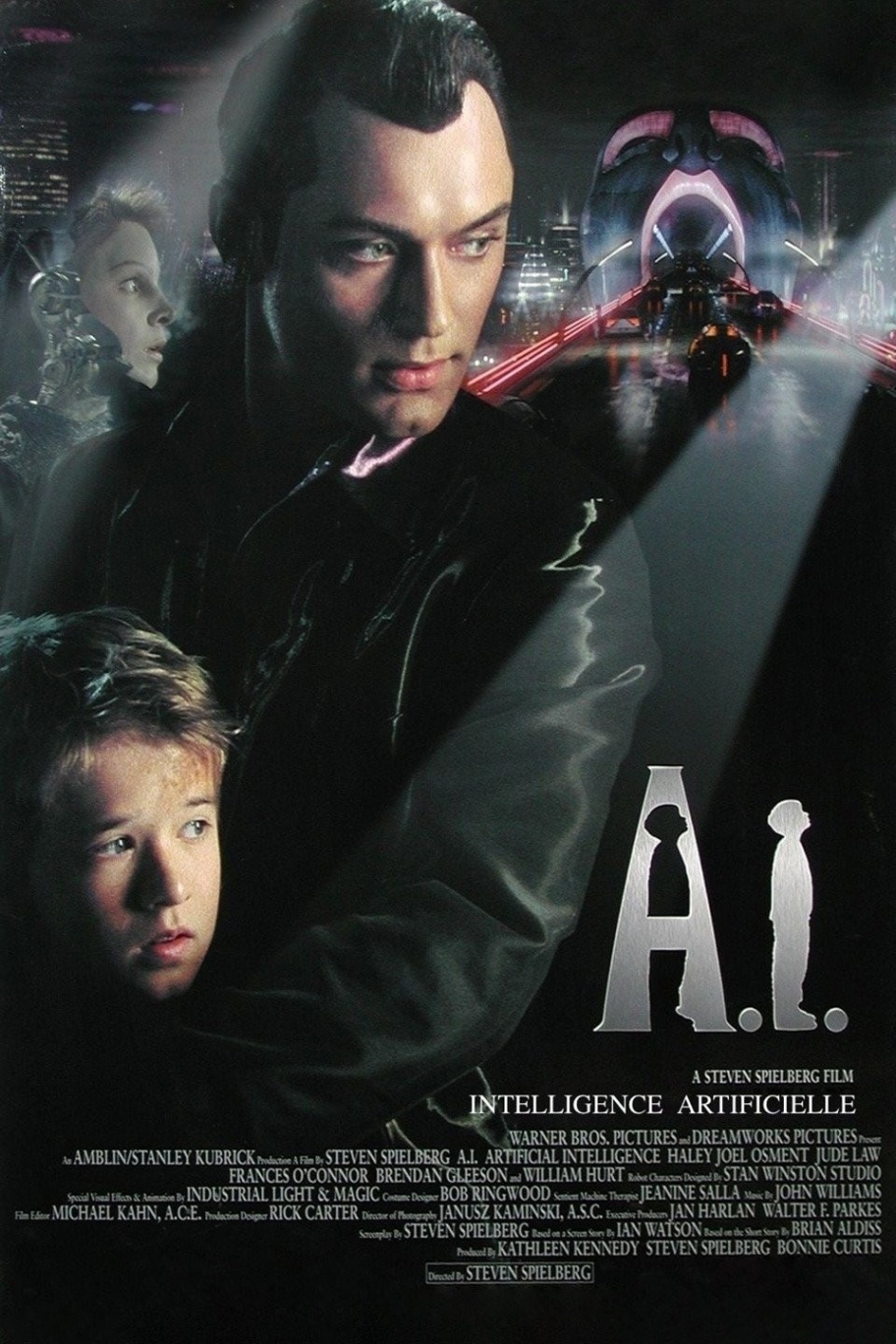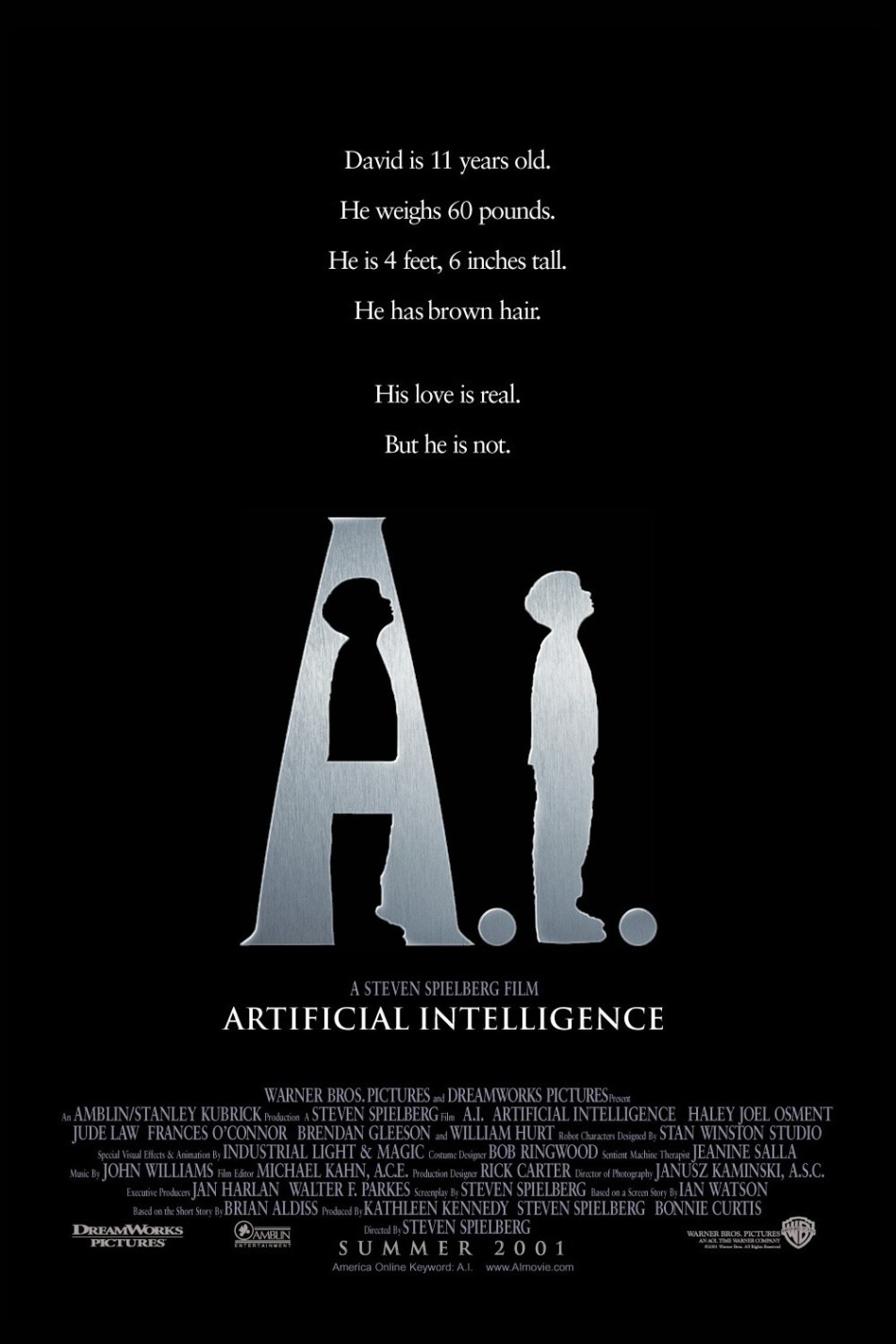Dive into the World of AI
Welcome to the fascinating world of Artificial intelligence (AI) in the year 2001! As we embark on this journey to explore the wonders of AI, we will delve into the groundbreaking advancements and innovations that shaped the landscape of artificial intelligence during this time.

Image Source: wordpress.com
In 2001, AI was beginning to gain traction and make its mark in various industries, from healthcare to finance, from transportation to entertainment. The possibilities seemed endless as researchers and developers pushed the boundaries of what AI could achieve.
One of the key areas of focus in AI during 2001 was machine learning. This branch of AI aimed to create algorithms that could learn from data and improve over time without being explicitly programmed. This led to significant advancements in speech recognition, natural language processing, and computer vision.

Image Source: flixster.com
Another exciting development in 2001 was the rise of expert systems, which were AI programs designed to mimic the decision-making abilities of a human expert in a specific domain. These systems were used in various fields, such as medicine, engineering, and finance, to assist professionals in making complex decisions.
Additionally, 2001 saw the emergence of AI-powered virtual assistants, such as Microsoft’s Clippy and Apple’s Siri. These virtual assistants were designed to help users with tasks like scheduling appointments, sending emails, and answering questions, making them an indispensable tool in the age of digital technology.

Image Source: media-amazon.com
Furthermore, the field of robotics saw significant advancements in 2001, with the development of AI-powered robots that could perform tasks like manufacturing, assembly, and even surgery with incredible precision and efficiency. These robots revolutionized industries and paved the way for a future where humans and machines could work together seamlessly.
As we reflect on the state of AI in 2001, it is clear that the possibilities were endless, and the potential for growth and innovation was limitless. The researchers, developers, and innovators of the time were paving the way for a future where AI would become an integral part of our daily lives, transforming the way we work, communicate, and interact with the world around us.
So let’s dive deeper into the world of AI in 2001 and uncover the wonders that were being unveiled during this transformative time. Join us on this exciting journey as we explore the magic of AI and elevate our understanding of artificial intelligence to new heights. Let’s level up our knowledge and embrace the future of AI with open arms.
Unveiling the Wonders of 2001 AI
Welcome to the fascinating world of Artificial intelligence in the year 2001! As we embark on this journey of discovery, prepare to be amazed by the incredible advancements and innovations that took place in the field of AI during this time. From groundbreaking research to exciting new applications, 2001 was a year that truly showcased the potential of artificial intelligence.
One of the most significant developments in AI in 2001 was the introduction of the Open Source Artificial Intelligence Engine (OAAIE). This revolutionary platform allowed developers to create and share their AI algorithms and models, leading to a rapid acceleration of AI research and development. The OAAIE quickly became a key tool for researchers and innovators seeking to push the boundaries of artificial intelligence.
Another major milestone in AI in 2001 was the development of the first autonomous mobile robot capable of navigating complex environments. This robot, known as the Autonomous Navigation Robot (ANR), was equipped with advanced sensors and algorithms that allowed it to move independently and make decisions in real-time. The ANR represented a significant leap forward in the field of robotics and demonstrated the power of AI in enabling machines to perform complex tasks autonomously.
In addition to these groundbreaking advancements, 2001 also saw significant progress in the field of natural language processing (NLP). Researchers made significant strides in developing algorithms that could understand and generate human language, paving the way for the development of virtual assistants and Chatbots that could communicate with users in a natural and intuitive way.
The year 2001 also saw the emergence of AI-powered recommendation systems, which revolutionized the way we discover and consume content online. These systems used sophisticated algorithms to analyze user behavior and preferences, providing personalized recommendations for movies, music, books, and more. This innovation marked a major shift in how companies approached marketing and customer engagement, harnessing the power of AI to deliver more relevant and engaging experiences to users.
Furthermore, 2001 was a year of significant progress in the field of computer vision, with researchers making strides in developing algorithms that could analyze and interpret visual information. These advancements laid the groundwork for a wide range of applications, from facial recognition technology to autonomous vehicles, and paved the way for the integration of AI into everyday devices and technologies.
As we reflect on the wonders of 2001 AI, it becomes clear that this was a year of incredible innovation and progress in the field of artificial intelligence. From autonomous robots to natural language processing, recommendation systems to computer vision, the advancements made in AI during this time set the stage for the transformative impact that AI would have on our world in the years to come. So, let’s continue to explore and marvel at the incredible possibilities that AI holds, as we continue to level up our knowledge and understanding of this exciting and ever-evolving field.
Elevate Your Understanding of Artificial intelligence
As we dive into the world of artificial intelligence in 2001, it’s essential to elevate our understanding of this revolutionary technology. Artificial intelligence, or AI, is the simulation of human intelligence processes by machines, especially computer systems. In the past few decades, AI has evolved rapidly, transforming various industries and changing the way we live and work.
In 2001, AI was already making waves in fields such as healthcare, finance, and transportation. Researchers and developers were pushing the boundaries of what AI could achieve, paving the way for future innovations. By exploring the advancements in AI during this time, we can gain valuable insights into the potential of this technology and how it has shaped our world today.
One key aspect of AI in 2001 was the development of machine learning algorithms. These algorithms enabled computers to learn from data and make decisions without explicit programming. This breakthrough allowed AI systems to improve over time and adapt to new information, making them more efficient and effective in their tasks.
Another important area of AI in 2001 was natural language processing (NLP). NLP technology enabled computers to understand and generate human language, opening up new possibilities for communication and interaction between humans and machines. This advancement laid the foundation for virtual assistants like Siri and Alexa, which have become integral parts of our daily lives.
In addition to machine learning and NLP, AI in 2001 also saw advancements in computer vision. Computer vision technology enabled computers to interpret and understand visual information from the world around them, enabling applications such as facial recognition, object detection, and autonomous vehicles. These capabilities have revolutionized industries like security, retail, and transportation, making them more efficient and secure.
Furthermore, AI in 2001 was instrumental in improving healthcare outcomes. AI-powered systems were able to analyze large amounts of medical data and assist in diagnosing diseases, predicting patient outcomes, and recommending personalized treatment plans. This technology has saved countless lives and continues to drive innovation in the healthcare industry.
As we explore the magic of AI in 2001, it’s clear that this technology has the power to transform our world in profound ways. By elevating our understanding of artificial intelligence, we can appreciate the advancements made in the past and look forward to the possibilities that lie ahead. AI is not just a tool or a trend – it is a fundamental shift in how we think about technology and its potential to improve our lives.
In conclusion, the advancements in AI in 2001 have laid the foundation for the incredible innovations we see today. By understanding the developments in machine learning, natural language processing, computer vision, and healthcare, we can gain a deeper appreciation for the impact that AI has had on our world. So let’s continue to level up our knowledge on AI and explore the exciting possibilities that lie ahead.
Discover the Magic of AI in 2001
In the year 2001, the field of Artificial intelligence (AI) experienced significant advancements and breakthroughs that laid the foundation for the future of technology. From cutting-edge research to innovative applications, the magic of AI in 2001 truly showcased the potential of this exciting field.
One of the most notable developments in AI in 2001 was the introduction of the concept of deep learning. Deep learning is a subset of machine learning that uses neural networks to mimic the way the human brain processes information. This revolutionary approach to AI enabled computers to analyze and interpret complex data in ways that were previously thought impossible.
Another key milestone in AI in 2001 was the development of robotic systems with advanced AI capabilities. Researchers and engineers worked tirelessly to create robots that could perform a wide range of tasks, from simple household chores to complex surgical procedures. These intelligent machines represented a major leap forward in the field of robotics and opened up new possibilities for the future of Automation.
In addition to advancements in deep learning and robotics, 2001 also saw the rise of AI-powered virtual assistants. Companies like Apple and Google introduced virtual assistants that could understand and respond to human speech, revolutionizing the way we interact with technology. These virtual assistants paved the way for the development of smart Home devices and personalized customer service experiences.
The magic of AI in 2001 wasn’t just limited to research labs and tech companies – it also had a profound impact on everyday life. From personalized recommendations on streaming services to predictive text on smartphones, AI algorithms were becoming an integral part of our daily routines. The convenience and efficiency afforded by these AI-powered technologies made them indispensable tools for modern living.
As the year 2001 drew to a close, the magic of AI continued to captivate the imaginations of researchers, innovators, and the general public alike. The possibilities seemed endless, with AI poised to revolutionize industries ranging from healthcare to finance to transportation. The future of AI in 2001 was bright, with unprecedented opportunities for growth and exploration on the horizon.
Looking back on the magic of AI in 2001, it’s clear that this was a pivotal moment in the history of artificial intelligence. The advancements made during this time laid the groundwork for the incredible progress that has been made in the field since then. As we continue to push the boundaries of what is possible with AI, it’s important to remember the excitement and optimism that defined the magic of AI in 2001.
artificial intelligence 2001